Once again. Maybe we should locate Origo (suggested by me to
correspond to the first invisible banana
species Ri'o) at Beid (the Egg, ο¹ Eridani), with
hanga o rio (Origo) then easy to associate with the famous
Ωrion constellation - the
beginning of which came at Rigel (*78) significantly 16 right
ascension days later, viz. at the time when Beid would have returned to
visibility after its close encounter with the Sun.

... Ancient varieties were called ri'o, hihi, korotea, pia,
pukapuka, naho'o ...
|
APRIL 1
(91) |
2 |
3 |
4 (*14) |
 |
 |
 |
 |
|
Ga1-11 |
Ga1-12 |
Ga1-13 |
Ga1-14 |
|
HAEDUS II = η Aurigae
(75.9) |
5h (76.1)
ε
Leporis (76.0),
CURSA
(Footstool)
=
β
Eridani
(76.4),
λ
Eridani (76.7) |
μ
Aurigae, μ Leporis (77.6) |
ĸ Leporis (78.0),
RIGEL
(Foot) =
β
Orionis
(78.1),
Flaming Star = IC405
(78.2),
CAPELLA
(Little Goat) =
α
Aurigae
(78.4),
ο
Columbae,
τ
Orionis (78.8)
*37.0 = *78.4 - *41.4
THUBAN (α Draconis)
|
|
... In view of
the almost universal prevalence of the Pleiades year
throughout the Polynesian area it is surprising to
find that in the South Island and certain parts of
the North Island of New Zealand and in the
neighboring Chatham Islands, the year began with the
new Moon after the yearly morning rising, not of the
Pleiades, but of the star Rigel in Orion ...

From Aldebaran there was a great
expansion between Rigel and Capella - kokoro
- width, expanse; wide, spacious. Te kokoro o te
hare, the expanse of a wide house. Vanaga. To
widen, to expand. Churchill. (<) |
|
June 4 |
5 |
6 (157 =
314 / 2) |
7 (*78) |
|
°May 31
(151) |
°June 1 |
2 (*73) |
3 |
|
'May 8
(128) |
9 |
10 (*50) |
11 |
|
"April
24 (114) |
Vaitu Nui
25 (115)
(E:17) |
26 (*36) |
27 |
|
... On the twenty-fifth day [raa]
of the first month ('Vaitu Nui'), Ira and Makoi set
sail. (i te rua te angahuru marima raa o te vaitu
nui.i oho.mai ai a ira.ko Makoi).
 |
|
DAY 75 -
64 = 11 |
12 (=
115 - 84 - 19) |
13 |
14 |
|
11 Roro Hau
a mana ai rea |
12 Vai Poko
a raa mata turu |
13 Ko Te Hereke
a kino ariki |
14 Hatu Ngoio
a taotao ika |
|
8 he ngu haha tea
taro guhu haha tea |
9 he mango
taro magó |
10 he hahara rapanui
taro harahara rapanui |
1 he ti |
|
Poko. 1. Fragrant; to smell, to give
off a smell: he-poko te eo, it gives off
a pleasant smell. 2. To hunt, to catch with a
trap, to snare. He-kî e Tori: maaku-á e-ea ki
te manu, e-poko i te po i ruga i te opata.
Tori said: I shall go and catch birds at night,
up on the cliff. 3. Thunder (also hatutiri).
4. (Also: pokopoko.) Hollow, hole,
depression, any deep, concave object; to leave
in a hole, in a depression. Pokoga,
chasm; summit. Pokohata, female rat:
kio'e pokohata. Pokopoko, woman bent
under the weight of her years: vî'e pokopoko.
Vanaga. 1. Sound of the sea; tai poko,
breakers. Pokopoko, to slap water. Mgv.:
pokokina, resonant, clear-toned. Mq.:
poko, to slap the water in imitation of
drumming; pokokina, sound of water. 2.
Rut, beaten path. P Pau.: poko, hollow;
pokopoko, concave, to excavate. Mgv.:
poko, to dig, to excavate, to hollow out.
Mq.: pokoko, to crack open; pokona,
to hollow out, to excavate. Ta.: poópoó,
hollow, deep. 3. Infernal; pokoga, hell,
infernal cave; topa ki te pokoga, to damn
(lit: to go down to hell.) Mq.: pokona,
cavity, hole. Churchill. Pokopoko: 1.
Womb. PS Sa.: po'opo'o, clitoris. Mq.:
pokopoko, pudendum muliebre. 2. Pokopoko
vae, footprints. 3. Concave, deep, ditch,
mysterious; pokopoko ihu, nostril
(Ta.: poópoó ihu); pokopoko
ke, fathomless; pokopoko taheta,
concave. Hakapokopoko, to deepen.
Chuchill.
Mago. Spotted dogfish,
small shark. Vanaga. Mogo, shark. P Pau.:
mago, id. Mgv. mago, id. Mq.
mano, mako, mono, moko id. T. maó,
id. In addition to this list the word is found
as mago in Samoa, Maori, Niuē,
and in Viti as mego.
It is only in Rapanui and the Marquesas that we
encounter the variant mogo.
Churchill.
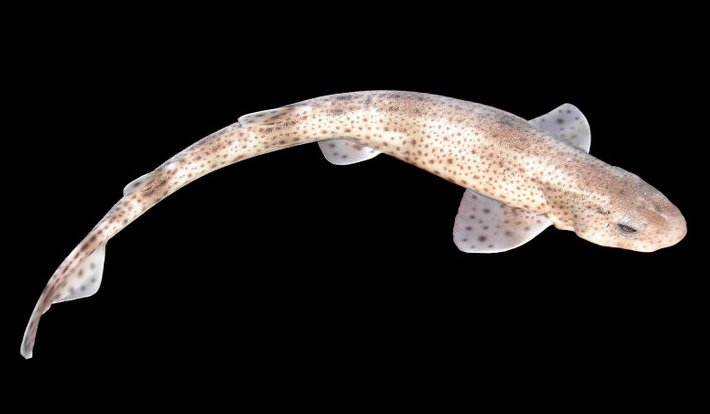
Hara. Harahara 1.
Misaligned (of roofing, basketware, etc.); e
harahara nó te kete, the basket is
misaligned (its strips are not parallel. 2. A
sort of taro. 3. Latrine, defecating ground.
Vanaga. 1. Pandanus. P Mgv.: ara,
puhara, pandanus (tree); hara, a
bunch of pandanus fruit, old pandanus. Mq.:
faá haá, pandanus. Ta.: fara, id. 2.
Error, mistake, oversight, wrong; to err, to
confound, to mistake; manau hara,
illusion; toua hara, discussion without
knowing the object. P Mgv.: ara, arara,
defective, abortive, to miss, to fail, a fault,
a quarrel; hara, a fault, a mistake, an
error, a dispute, a quarrel, undisciplined. Mq.:
hara, a rake, libertine. Ta.: hara,
sin, fault, crime. Churchill.
Haha. 1. Mouth (oral
cavity, as opposed to gutu, lips). 2. To
carry piggy-back. He haha te poki i toona
matu'a, the child took his father on his
back. Ka haha mai, get onto my back (so I
may carry you). Vanaga. 1. To grope, to feel
one's way; po haha, darkness, obscure. 2.
Mouth, chops, door, entrance, window; haha
pipi, small mouth; haha pipiro, foul
breath; ohio haha, bit of bridle;
tiaki haha, porter, doorkeeper. Churchill.
Ha. 1. Four. 2. To
breathe. Hakaha'a, to flay, to
skin. Vanaga. 1. Four. P Mgv., Mq., Ta.: ha,
id. 2. To yawn, to gape. 3. To heat. 4.
Hakaha, to skin, to flay; unahi hakaha,
to scale fish. Mgv.: akaha, to take to
pieces, to take off the bark or skin, to strip
the leaves off sugarcane. 5. Mgv: ha,
sacred, prohibited. Mq.: a, a sacred
spot. Sa.: sa, id. Churchill.
... Thuban
had been the star at the North Pole when the
great Egyptian pyramids where built.
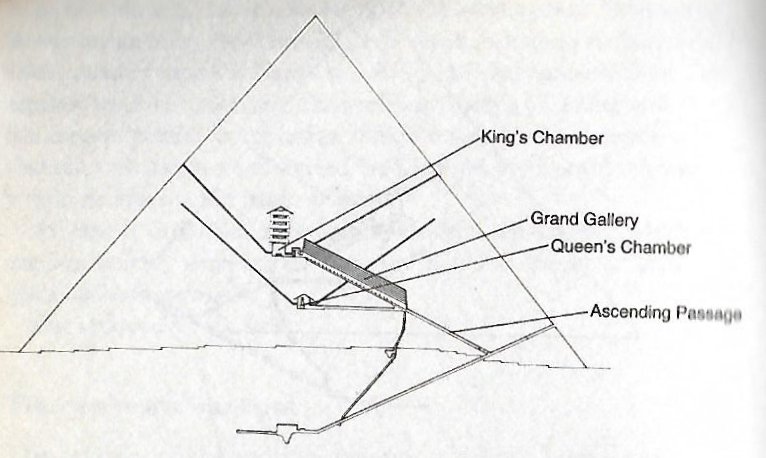
... The star could be seen, both by day and
night, from the bottom of the central passage of
the Great Pyramid of Cheops (Knum Khufu)
at Ghizeh, in 30° of north latitude, as also
from the similar points in five other like
structures; and the same fact is asserted by Sir
John Herschel as to the two pyramids at
Abousseir ... For some
reason, too, it had taken their fancy to place
the Great Pyramid almost exactly on the 30th
parallel at latitude 29º 58' 51". This, a former
astronomer royal of Scotland once observed, was
'a sensible defalcation from 30º', but not
necessarily in error: For if the original
designer had wished that men should see with
their body, rather than their mental eyes, the
pole of the sky from the foot of the Great
Pyramid, at an altitude before them of 30º, he
would have had to take account of the refraction
of the atmosphere, and that would have
necessitated the building standing not at 30º
but at 29º 58' 22'
...
Hatu. 1. Clod of earth; cultivated land;
arable land (oone hatu). 2. Compact mass
of other substances: hatu matá, piece of
obsidian. 3. Figuratively: manava hatu,
said of persons who, in adversity, stay composed
and in control of their behaviour and feelings.
4. To advise, to command. He hatu i te vanaga
rivariva ki te kio o poki ki ruga ki te opata,
they gave the refugees the good advice not to
climb the precipice; he hatu i te vanaga
rakerake, to give bad advice. 5. To collude,
to unite for a purpose, to concur. Mo hatu o
te tia o te nua, to agree on the price of a
nua cape. 6. Result, favourable outcome
of an enterprise. He ká i te umu mo te hatu o
te aga, to light the earth oven for the
successful outcome of an enterprise. Vanaga. 1.
Haatu, hahatu, mahatu. To
fold, to double, to plait, to braid; noho
hatu, to sit crosslegged; hoe hatu,
clasp knife; hatuhatu, to deform. 2. To
recommend. Churchill. In the Polynesian dialects
proper, we find Patu and Patu-patu,
'stone', in New Zealand; Fatu in Tahiti
and Marquesas signifying 'Lord', 'Master', also
'Stone'; Haku in the Hawaiian means
'Lord', 'Master', while with the intensitive
prefix Po it becomes Pohaku, 'a
stone'. Fornander.
Goio. Mgv.: a black seabird. Mq.: koio,
noio, a bird. Ha.: noio, a small
black bird that lives on fish. Churchill. |
Zaurak (the Boat, γ Eridani) came 4
days earlier and Cursa (the Footstool, β Eridani) rose 76 - 62 =
14 days later. The curved form from Zaurak to Cursa could be perceived
as the outline of a boat, a banana, or the crescent of the Moon
herself.

Notably there was also a star
ο² Eridani close to the Egg
(ο¹). This star (not listed by me) was named Keid (a name
quite similar to Beid). Allen:
"ο² is the Keid of modern
lists, Burritt's Kied, from Al Kaid, the
Egg-shells, thrown out from the nest close by."

|
3-14 (73) |
MARCH 15 |
16 |
17 |
18 |
19 |
20 (*364) |
 |
 |
 |
 |
 |
 |
 |
|
Gb8-24
(465) |
Gb8-25 |
Gb8-26 |
Gb8-27 |
Gb8-28 |
Gb8-29 |
Gb8-30
(242) |
|
MENKHIB (Next to the Pleiades =
ζ
Persei
(57.6)
PORRIMA (γ Virginis) |
ZAURAK
(Boat)
=
γ
Eridani
(58.9) |
λ Tauri
(59.3), ν Tauri (59.9) |
4h (60.9)
JĪSHUĬ = λ Persei
(60.7)
COR CAROLI (α Canum Ven.) |
υ Persei
(61.2) |
BEID
(Egg)
=
ο¹
Eridani
(62.2),
μ
Persei (62.8)
VINDEMIATRIX ( ε Virginis)
|
Al Dabarān-2 (The Follower)
HYADUM I =
γ
Tauri
(63.4)
*22.0 = *63.4 - *41.4 |
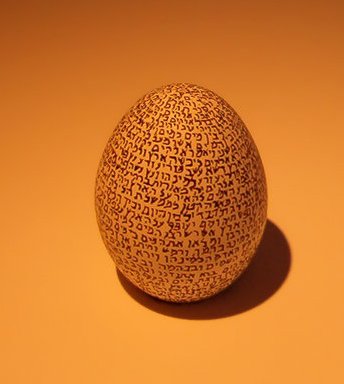 |
|
May 17
(137) |
18 (*41 + *17) |
19
(*424) |
20 |
21 |
22 |
23
(*428) |
|
°May
13 |
14 (*54) |
15
(*420) |
16 (136) |
17 |
18 (*58) |
19
(*424) |
|
'April
20 |
21 (111) |
22 |
23 |
24 |
25 (*400) |
26 (*36) |
|
"April 6 |
7 |
8 |
9 (464) |
10 (100) |
11 |
12 (*22) |
|
16 he aro piro
kumara aro piro |
17 he pekepeke mea |
18 he pekepeke uri |
19 he aringa rikiriki
kumara ariga rikiriki |
20 he tua tea |
20 he mamari kiakia |
1
he koro tea
korotea |
|
Peke.1. To bite (of fish or lobster
pecking at fishhook). 2. To repeat an action:
he-peke te rua; ina ekó peke-hakaou te rua don't
you do it a second time; ina ekó peke hakaou-mai
te rua ara, don't come back here again. Vanaga.
To succeed, to follow. Pau.: peke, to follow,
to accompany. Ta.: pee, to follow. Churchill.
Mgv.: Pekepeke. 1. The tentacles of the
octopus retracted. Mq.: peke, to tuck up the
clothes. Ma.: pepeke, to draw up the legs and
arms. 2. A crab. Ha.: pee-one, a crab that
burrows in the sand. Churchill.

Mamari. Egg, fish roe.
mâmari ata rauhau, last small egg laid by a hen
before she turns broody. Vanaga. Egg (of fowl or
fish), (gamamari), (Cf. komari.);
mamari punua, chicken in the shell. Churchill.
Kiakia.
Dove, gull T. Mgv.: kiakia,
the cry of the kotake (a white marine bird.)
Churchill.
Kumara. Sweet potato. The main varieties are:
kumara pita, kumara rega moe tahi uriuri, kumara
rega moe-tahi teatea, kumara rega vî'e, kumara
aro piro, kumara paka
taero, kumara ariga rikiriki,
kumara uriuri, kumara ûka teatea, kumara ure omo,
kumara ha'u pú, kumara ure omo uriuri. Vanaga.
Sweet potato. P Pau., Mgv.: kumara, id. Mq.:
kumaá, id. Ta.: umara, umaa,
id. Churchill.
Koro. 1. Father (seems to be an older word
than matu'a tamâroa). 2. Feast, festival;
this is the generic term for feasts featuring songs
and banquetting; koro hakaopo, feast where
men and women danced. 3. When (also: ana koro);
ana koro oho au ki Anakena, when I go to
Anakena; in case, koro haga e îa,
in case he wants it. Vanaga. If. Korokoro, To
clack the tongue (kurukuru). Churchill. Ma.:
aokoro, pukoro, a halo around the
moon. Vi.: virikoro, a circle around the
moon. There is a complete accord from Efaté through
Viti to Polynesia in the main use of this stem and
in the particular use which is set to itself apart.
In Efaté koro answers equally well for fence
and for halo. In the marked advance which
characterizes social life in Viti and among the
Maori the need has been felt of qualifying koro
in some distinctive manner when its reference is
celestial. In Viti virimbai has the meaning
of putting up a fence (mbai fence); viri
does not appear independently in this use, but it is
undoubtedly homogenetic with Samoan vili,
which has a basic meaning of going around;
virikoro then signifies the
ring-fence-that-goes-around, sc. the moon. In the
Maori, aokoro is the cloud-fence. Churchill
2. |
This fact (the existence of ο¹ and ο²
Eridani close together like twins) could have induced the idea
of 'a pair of sweet potatoes' both numbered 20.
... Once upon a time there was an old woman who owned a great
potato field (mara) where she planted her potatoes in
spring and harvested them in autumn. She was famous all around
for her many varieties of wonderful potatoes, and she had enough
of them to sell at the market place. She planted her potatoes 7
in a row, placing her foot in front of her as a measure from one
potato to the next. Then she marked the place with a bean -
which would also give nourishment to the surrounding potatoes.
Next she changed variety and planted 7 more followed by another
bean, and this was the pattern she followed until all her 214
varieties had been put down in their proper places. She had
drawn a map which she followed and from where each sort of
potato could be located at the proper time for its harvest ...
(7 + 1) * 214 = 4 *
428 → May 23 (*428).
My glyph type puo
(covered up) marks both the place for Bharani and the end of side
b on the G tablet.

Puo. (Also pu'a);
pu'o nua, one who covers himself with a nua
(blanket), that is to say, a human being. Vanaga. 1. To dress,
to clothe, to dress
the hair; puoa, clothed; puoa tahaga,
always dressed. 2. To daub, to besmear (cf. pua 2);
puo ei oone, to daub with dirt, to smear. 3. Ata puo,
to hill up a plant. Churchill.
From heliacal Bharani (*41) up to and including the first empty glyph
place on side b of the G tablet (*64) there are *23 right ascension
days, equal to the time depth from the age of Bharani down to that of
the Bull. May 24 (12 * 12) - May 1 (11 * 11) = 23.
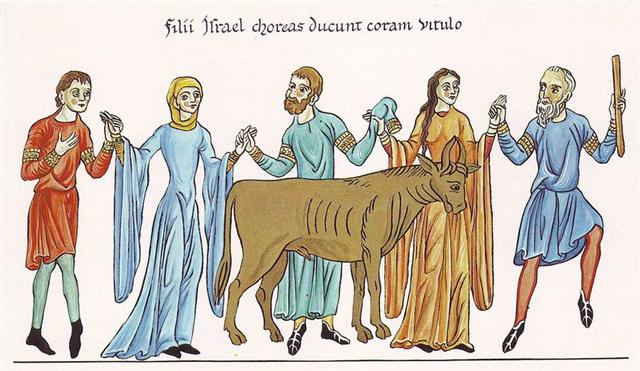
But ο¹ rose a little earlier than ο²:
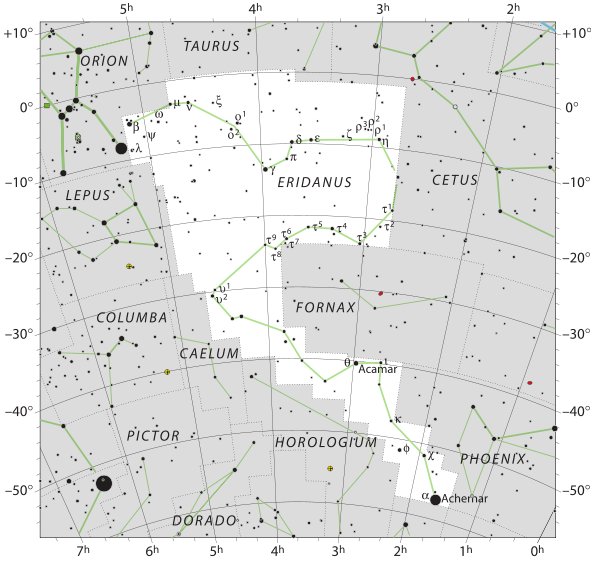
The order in Manuscript E of the other 5 'banana
varieties' is not the same as that in Vanaga -
except for naho'o:
|
he maika. |
|
1 (2) |
he koro tea. |
a Teke. a Oti. |
|
2 (1) |
he hihi. |
|
3 (4) |
he pukapuka. |
|
4 (3) |
he pia. |
|
5 (5) |
he nahoo. |
|
0h |
MARCH 22
(*1) |
23 (82) |
|
no glyph |
 |
 |
|
Ga1-1 |
Ga1-2 |
|
HYADUM II = δ¹ Tauri
(64.2) |
Net-19 (Crow)
AIN
(Eye) =
ε Tauri,
θ¹
Tauri,
θ²
Tauri (65.7) |
no star
listed (66) |
|
May 24 |
25 (145) |
26 (*66
= *95 - * 29) |
|
°May
20 |
21 (*61) |
22 (142) |
|
'April
27 |
28 (118) |
29 (*39) |
|
"April
13 |
14 (104) |
15 (*25) |
|
DAY 64 |
DAY 1
= 65 - 64 |
2 |
|
- |
1 Ko Apina Iti
ko Rapa Kura |
2 Ko Hanga O Uo
a vave renga |
|
2 he hihi
hihi |
3 he pukapuka
pukapuka |
4 he pia
pia |
 |
|
NAKSHATRA DATES: |
|
SEPT 20
(*183) |
21 (264) |
EQUINOX |
|
Heart-5 (Fox)
σ
Scorpii
(247.0),
HEJIAN = γ Herculis
(247.2),
ψ
Ophiuchi (247.7) |
ρ
Ophiuchi (248.1),
KAJAM (Club) =
ω
Herculis
(248.3),
χ
Ophiuchi (248.5),
SHE LOW (Market Tower) = υ Ophiuchi,
Tr.
Austr. (248.7), ζ Tr. Austr. (248.8) |
Al Kalb-16 (The Heart) /
Jyeshtha-18 (Eldest) /
ANA-MUA-1 (Entrance pillar)
ANTARES
= α Scorpii
(249.1),
MARFIK (Elbow) = λ Ophiuchi,
φ Ophiuchi (249.5), ω Ophiuchi (249.8 |
|
Nov 23
(327) |
24 |
25 (*249) |
|
°Nov 19 |
20
(*244) |
21 (325) |
|
'Oct 27
(300) |
28 |
29
(*222) |
|
"Oct 13
(286) |
14 |
15
(*208) |
 |
|
MARCH 24
(83) |
25 (Julian equinox) |
26 (*5) |
27 |
 |
 |
 |
 |
|
Ga1-3 |
Ga1-4 |
Ga1-5 |
Ga1-6 |
|
no star
listed (67) |
Rohini-4 (The Red One) /
Pidnu-sha-Shame-4 (Furrow of Heaven)
/
ANA-MURI-2 (Rear pillar - at the foot of which was
the place for tattooing)
ALDEBARAN
= α Tauri
(68.2),
THEEMIN = υ² Eridani
(68.5) |
no star
listed (69) |
no star
listed (70) |
|
May 27 |
28 (148) |
29 |
30 (*70) |
|
°May
23 |
24 (144) |
25 (*65) |
26 |
|
'April
30 |
'May 1
(121) |
2 (*42) |
3 |
|
16 (471 = 314 *
1½) |
"April 17 (107) |
18 (*28) |
19 |
|
DAY 67 -
64 = 3 |
4 |
5 |
6 |
|
3 Hanga Roa
a tuki tukau |
4 Okahu
a uka ui hetuu |
5 Ra Tahai
a uo |
6 Ahu Akapu
a mata kurakura |
|
Ku hú á te huka-huka, ku herohero
á i roto i te ahi, burning wood shows red in the
fire.
Oka.
1. Lever, pole; to dig holes in the
ground with a sharpened stick, as was done in
ancient times to plant vegetables; used generally in
the meaning of making plantations. 2. The four
sideways poles supporting a hare paega.
Okaoka, to jab, to pierce, to prick repeatedly.
Vanaga. Digging stick, stake, joist; to prick, to
pierce, to stick a thing into, to drive into, to
slaughter, to assassinate; kona oka kai,
plantation; pahu oka, a drawer. Okaoka,
a fork, to prick, to dig. Okahia, to prick.
Churchill. |
|
5 he nahoo
naho'o |
1 ngeti uri |
2 ngeti tea |
3
he ngaatu
taro gaatu apó |
Hanga Roa is the main landing place on the west coast
of Easter Island, and here Captain Cook arrived in 3-14 (→
π), i.e. 33 days before 4-16 (471 = 314 * 1½). He left
3 days later.
... And therefore Shahin (→
Shah) would have returned to visibility in day 260 (SEPTEMBER
17), when the Full Moon reached MARCH 17 (76 =
260 - 184) - an event which surely would have been good (maitaki)
and have cheered all 'hearts'. The Milky Way River
was a path of reincarnation ...

Ga. Preposed plural marker of rare usage. 1.
Sometimes used with a few nouns denoting human beings, more
often omitted. Te ga vî'e, te ga poki, the women and
the children. Ga rauhiva twins. 2. Used with some
proper names. Ga Vaka, Alpha and Beta Centauri (lit.
Canoes). Vanaga.
Hoko. 1. To jump; to rock or
swing in rhythm with the chants in festivals, as was the
ancient custom; an ancient
dance. He to'o mai e te hoa manu i te mamari ki toona rima, he ma'u,
he hoko, the 'bird master' receives the egg in his hand
and carries it, dancing. 2. Number prefix: 'in a
group of...': hokotahi,
alone; hokorua, in a group of two (also companion, e
hakarere te kai mo toou hokorua, leave some food for my
companion); hakatoru, in a group of three, etc.;
hokohía, in a group of how many? Hokohía ana oho koe
ki te rano? With how many people will you go to the
volcano? Vanaga. 1. To traffic, to trade, to buy, to ransom
(hoò); hoòa te kaiga, to buy land. 2. To
sport, to play. Churchill. Move the body to and fro with the
rythm of a song. Barthel.
The name he nahoo
makes me remember a curious name for the slowly moving
Ωld Saturn, viz. 'running swiftly'. Although Saturn was
outside the orbit of Jupiter he nevertheless managed to
complete his cycle quicker:
|
Synodic cycles |
|
Jupiter |
398.88 |
|
Saturn |
378.09 |
Maybe he was
transported swiftly onboard some kind of boat.
|
Hawaiian Islands |
Society Islands |
New Zealand |
Pukapuka |
|
Naholoholo,
'Swift-running'
Makulu,
'Dripping-water' |
Fetu-tea,
'Pale-star' |
Parearau,
'Circlet'
Kopu-nui,
'Great-paunch' |
Mata-tea,
'Pale-star' |
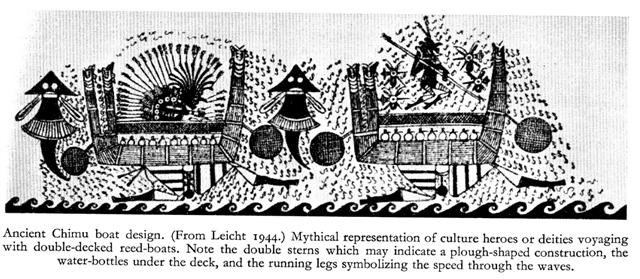
... The explorers reach Easter Island in a 'canoe' (vaka).
The name of their craft is given as Oraorangaru
'saved from the billows' (Brown 1924:40) or Te
Oraora-miro 'the living-wood' (ME:58). The Routledge
reference 'Each (man went) on a piece of wood' (RM:278) also
seems to refer to the name of the canoe. As far back as
1934, the name was no longer understood. I favor the
following explanation: The difficulty in interpreting the
name of the canoe of the explorers arises from the name
segment oraora. To begin with, the compound form
oraora ngaru should be analyzed in comparison
with other Polynesian compounds, such as MAO. pare-ngaru
'that which fends off the waves' (i.e., the hull of the
boat), TAH. tere-'aru 'that which moves through the
waves' (i.e., riding the waves on a board). There are
several possible translations for oraora as the
reduplication of ora. Te Oraora Miro can be
translated as 'the pieces of wood, tightly lashed together'
(compare TAH. oraora 'to set close together, to fit
parts of a canoe') and be taken to refer to the method of
construction of the explorer canoe, while Oraora Ngaru
means 'that which parts the water like a wedge', or 'that
which saves (one) from the waves, that which is stronger
than the waves' ...
... Miro-oone, model boat made of earth in which the
'boat festivals' used to be celebrated. Vanaga.
... on the first day of the year the
natives dress in navy uniforms and performs exercises which
imitate the maneuvers of ships' crews ...
The G text is evidently visualizing the
Golden Age of Taurus, because we can find heliacal Aldebaran
early on side a of the tablet.
Allen: "The Chinese called
β [Eridani, Cursa] Yuh Tsing,
the Golden Well."
Cursa would
have returned to visibility around
16 nights after its true heliacal rising and *35 (Cursa
at the time of Bharani) + *16 = *51 ("May 11). But the
Chinese Well was 3 days later, implying either
an addition with 19 (= 16 + 3) days or, rather, using the equinox at
the time of rongorongo (*79) as the starting point (*79
+ *16 = *95)
... Ecclesiastically, the equinox is
reckoned to be on 21 March (even though the equinox
occurs, astronomically speaking, on 20 March in most
years) ...
|
APRIL 17 (107) |
18 |
19 |
20
(*30) |
21 |
 |
 |
 |
 |
 |
|
Ga1-27 |
Ga1-28 |
Ga1-29 |
Ga1-30 |
Ga2-1 |
|
CLOSE TO THE
SUN: |
|
6h (91.3)
ν
Orionis (91.4),
θ
Columbae (91.5),
π
Columbae (91.6)
*50.0 = *91.4 - *41.4 |
ξ
Orionis (92.5) |
Al Han'ah-4 (Brand) /
Maru-sha-pu-u-mash-mashu-7 (Front of the Mouth
of the Twins)
TEJAT PRIOR
=
η
Gemini
(93.4),
γ
Monocerotis (93.5),
κ
Aurigae (93.6),
κ
Columbae (93.8)
*52.0 = *93.4 - *41.4 |
FURUD = ζ Canis Majoris
(94.9) |
Well-22 (Tapir) /
Arkū-sha-pu-u-mash-mashu-8
(Back of the Mouth of the Twins)
δ
Columbae (95.2),
TEJAT POSTERIOR =
μ
Gemini,
MIRZAM (The Roarer) = β Canis Majoris
(95.4),
CANOPUS
(Canopy) =
α
Carinae
(95.6),
ε
Monocerotis (95.7),
ψ1
Aurigae (95.9)
*54.0 = *95.4 - *41.4 |
|
June
20 |
SOLSTICE |
22
(*93) |
23
(174) |
ST JOHN'S DAY |
|
°June 16 |
17
(168) |
18 |
19 |
20
(*91) |
|
'May
24 (144) |
25 |
26 |
27 |
28
(*68) |
|
"May
10 (130) |
11 |
12 |
13 |
14
(*54) |
|
DAY
91 - 64 = 27 |
28 |
29 |
30 |
31 |
|
27 Ko Hanga
Nui
a te
Papa tata ika |
28 Ko Tonga
Riki
a
henga eha tunu kioe. hakaputiti ai ka
hakapunenenene.henua mo opoopo o tau kioe. |
29 Ko Te Rano
A Raraku
|
30 Oparingi
|
31 Oparingi
a
uuri |
|
... The
Pythagoreans make Phaeton fall into
Eridanus, burning part of its water, and glowing
still at the time when the Argonauts passed by.
Ovid stated that since the fall the Nile hides
its sources. Rigveda 9.73.3 says that the Great
Varuna has hidden the ocean. The Mahabharata
tells in its own style why the 'heavenly Ganga'
had to be brought down. At the end of the Golden
Age (Krita Yuga) a class of Asura
who had fought against the 'gods' hid themselves
in the ocean where the gods could not reach
them, and planned to overthrow the government.
So the gods implored Agastya (Canopus,
alpha Carinae = Eridu) for help. The great Rishi
did as he was bidden, drank up the water of the
ocean, and thus laid bare the enemies, who were
then slain by the gods. But now, there was no
ocean anymore! Implored by the gods to fill the
sea again, the Holy One replied: 'That water in
sooth hath been digested by me. Some other
expedient, therefore, must be thought of by you,
if ye desire to make endeavour to fill the ocean
...
 |

... The basic
myth of dynastic Egypt was that of the death and
resurrection of Osiris, the good king, 'fair of face', who
was born to the earth-god Geb and sky-goddess Nut. He was
born together with his sister-wife, the goddess Isis, during
the sacred interval of those five supplementary days that
fell between one Egyptian calendric year of 360 days and the
next. He and his sister were the first to plant wheat and
barley, to gather fruit from trees, and to cultivate the
vine, and before their time the races of the world had been
savage cannibals.
But Osiris's evil brother, Set, whose sister-wife was the
goddess Nephtys, was mortally jealous both of his virtue and
of his fame, and so, stealthily taking the measure of his
good brother's body, he caused a beautifully decorated
sarcophagus to be fashioned and on a certain occasion in the
palace, when all were drinking and making merry, had it
brought into the room and jestingly promised to give it to
the one whom it should fit exactly. All tried, but, like the
glass slipper of Cinderella, it fitted but one; and when
Osiris, the last, laid himself within it, immediately a
company of seventy-two conspirators with whom Set had
contrived his plot dashed forward, nailed the lid upon the
sarcophagus, soldered it with molten lead, and flung it into
the Nile, down which it floated to the sea ...

From 2 Ko Hanga O Uo a Vave Renga to 16 Hanga
Kuokuo a Vave Renga there were 2 weeks (= 364 / 26) - and we can
imagine a Flesh-eater (Sarcophagus) depicted at β
Tauri = γ Aurigae, immediately after the bitter
kape where Arcturus culminated.
|
APRIL 5 |
6
(96) |
7 |
 |
 |
 |
|
Ga1-15 |
Ga1-16 |
Ga1-17 |
|
λ Aurigae (79.0), λ Leporis (79.6), ρ Aurigae
(79.7)
ARCTURUS (α Bootis) |
Shur-narkabti-sha-iltanu-5 (Star in the Bull
towards the north)
σ
Aurigae (80.4),
BELLATRIX (Female Warrior) = γ Orionis, SAIF AL
JABBAR (Sword of the Giant) = η Orionis
(80.7),
ELNATH
(The Butting One) =
β
Tauri = γ Aurigae
(80.9) |
ψ
Orionis (81.1),
NIHAL (Thirst-slaking Camels) = β Leporis
(81.7) |
|
June
8 |
9 |
10
(161) |
|
... The
month, which takes its name from Juppiter the
oak-god, begins on June 10th and ends of July
7th. Midway comes St. John's Day, June 24th, the
day on which the oak-king was sacrificially
burned alive. The Celtic year was divided into
two halves with the second half beginning in
July, apparently after a seven-day wake, or
funeral feast, in the oak-king's honour
... |
|
°June 4 |
5
(156) |
6
(*77) |
|
'May
12 |
13 |
14
(*54) |
|
"April 28 (118 = 4 * 29½) |
29 |
30
(*40) |
|
DAY
79 - 64 = 15 |
16 |
17 |
|
15 Ara Koreu
a
pari maehaeha |
16 Hanga
Kuokuo
a
vave renga |
17 Opata Roa
a
mana aia |
|
He hatu i te vanaga rivariva
ki te kio o poki ki ruga ki
te opata, they
gave the refugees the good advice not to climb
the precipice.
He-kî e Tori: maaku-á e-ea ki
te manu, e-poko i te po i ruga i
te opata. Tori
said: I shall go and catch birds at night, up on
the cliff. |
|
1 he kape |
|
|
|
Ti by lying with
Tattooing made the ti plant (he ti ki
ai ki roto ki a he ta ka pu te ti). Burnt
ti leaves were used to produce the black dye
for tattooing.

Kape. 'Bitter-taro' (Alocasia
macrorrhiza). In 1957 kape was still
cultivated in much the same way as dry taro. It
is a type of food to be eaten during times of
famine. According to Fuentes (1960:856), the
tubers had to be kept in the earth-oven for 15 (sic)
days in order to eliminate some of the poisonous
components. Barthel 2. Arum, yam. Churchill.
Bitterness by doing it with Bad-taste produced
the kape (mangeongeo ki ai ki roto he
rakerake ka pu te kape). |
*80 (Elnath) + *15 (earth-oven) = *95 (Canopus).

|





























